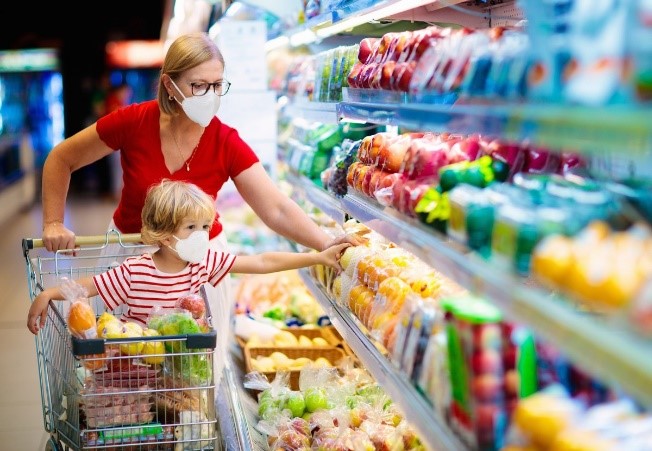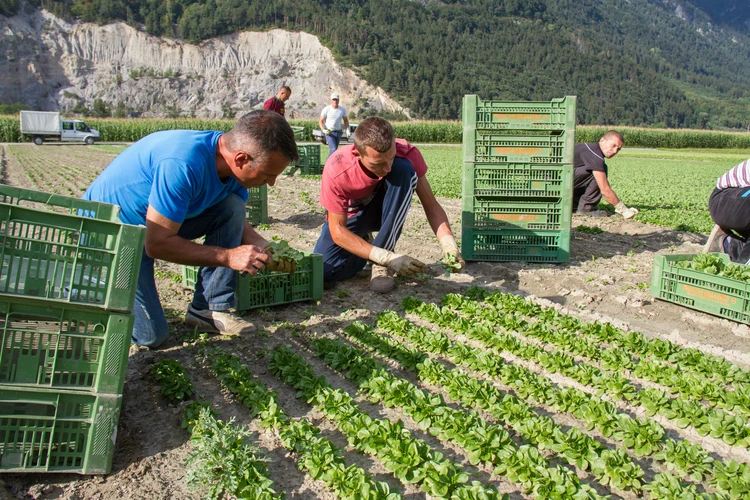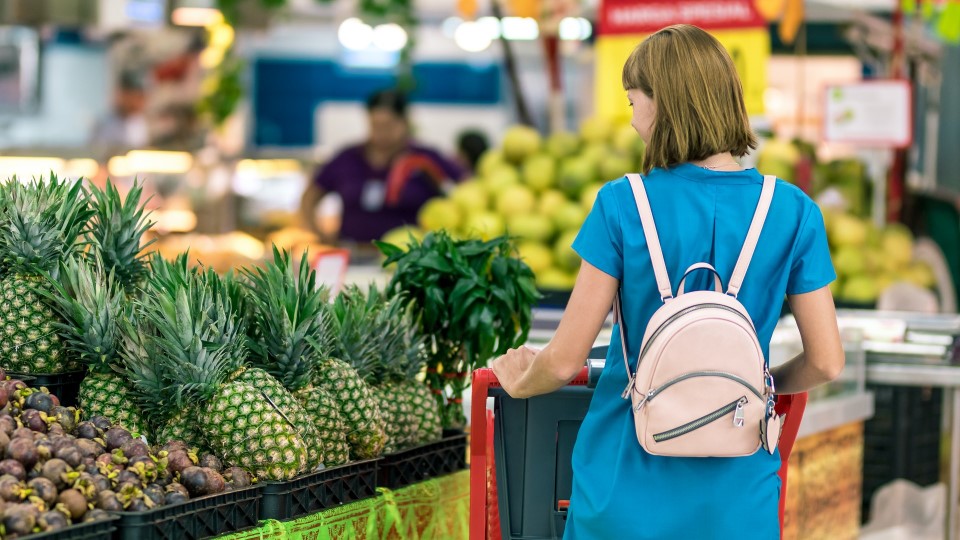The year 2020 made grocers and their staff heroes in the public eye: The unforeseen challenges in food retailing and the work on the front line to ensure the supply of essential products were very present for consumers. In this unusual year, preventing food spoilage probably did not take top priority for most grocers - in 2021, this will change again.
 The food retail sector will redouble efforts to reduce spoilage in 2021 - not only for environmental reasons - but also for business reasons: supply chain optimizations leading to less food waste and a better carbon footprint.
The food retail sector will redouble efforts to reduce spoilage in 2021 - not only for environmental reasons - but also for business reasons: supply chain optimizations leading to less food waste and a better carbon footprint.
The federal government has also launched an initiative to halve food spoilage and calls on retailers to actively participate. Many food retailers are already involved under the motto: "Too good for the bin" or "Retail dialogue forum".
Minimizing spoilage is the sustainability initiative that is likely to offer grocers the highest and fastest return on investment. The interest in sustainability and the impact of consumer behaviour on the environment was already a big trend in 2018 - in 2019 this will increase even more. This will bring big changes as consumers place more and more value on ethical, sustainable and ecological products when shopping.
This trend is also clearly noticeable in Germany. For example, the Bünting group of companies has received a lot of attention and approval from customers for the strong reduction of the carbon footprint of its regional supermarkets. The company owes this to a radical optimisation of its delivery journeys. Similar changes can be expected in the coming years at other retailers through the initiatives mentioned, where supermarkets are offering greener alternatives and developing more sustainable supply chains.
As consumers, the Millennial generation is also increasingly influencing the way we eat. They are opting for healthier alternatives that reflect their concern for sustainability and the environment - this includes buying organic products. However, past experience has shown that sales of organic produce are very sensitive to the economic climate. If the general cost of living increases or, as is currently the case with COVID 19, has a negative impact on the economy, consumers may put price above their principles.
However, if there is no economic downturn, it can be assumed that the organic trend will continue to grow.
Especially with fresh premium products such as organic meat, dairy products and vegetables, traders are well advised to minimise spoilage. This is achieved through precise forecasting: because if only one product spoils, this can jeopardise profits in many areas.
Ultra-fresh products such as fruit and vegetables are particularly difficult to manage. They are not comparable to any other category in food retailing, but at the same time represent one of the biggest sources of income and profit opportunities.
The unpredictability of the harvest often gives buyers only a week's planning horizon for fruit and vegetables. If you plan six months in advance, you might expect the orange season to start at the end of October - but this planning is thrown out the window if the season does not start until November. And it is the same with the end of the season.
Now bear in mind that different suppliers in different countries deliver different varieties of oranges. Each delivery can vary greatly in quantity, size, quality and price, depending on what the supplier can ship. And oranges are just one product out of your entire range of fruits and vegetables. Food retailers who work with order forecasts with a long planning horizon need a system that makes it easier for them to manage short-term planning: this way they ensure availability and prevent spoilage.

For products that are easier to forecast, a time series forecasting model has proven effective. Nevertheless, even the most accurate historical data is useless when it comes to extreme deviations. This is where the combination of different methods, from time series forecasting to machine learning algorithms, helps: This is how traders ensure that their forecasts are as accurate and up-to-date as possible. Machine learning can be used, for example, to adapt life cycle sales patterns to changing harvest patterns. Similarly, machine learning enables the use of local weather data to map the relationship between summer weather and increased demand for fresh fruit and lettuce.
A forecasting solution should be able to shift the time series forecast back by a few weeks if the harvest starts later. A price elasticity model then maps the development of demand at different selling prices. This guarantees that the order quantities ensure availability but prevent spoilage.
The prevention of spoilage and the measures for more sustainability not only benefited the environment in the companies studied: they also have a positive impact on the business balance sheet. All retailers reduced their spoilage costs significantly and measurably by using the RELEX software. Less spoilage translates directly into better margins and increased profitability.
The most effective way to reduce spoilage is to implement integrated supply chain processes - and this is when automatic replenishment planning is based on accurate sales forecasts. MRP plans should take into account granular forecasts at the daily level, dynamic safety stock and automatic spoilage control. This ensures that the right amount of fresh produce is available to meet customer demand without retailers suffering losses due to spoilage. Food retailers whose replenishment is not based on automatic sales forecasts have a five times higher risk of above-average spoilage rates.
High variance also means that fruit and vegetables are subject to large fluctuations in demand due to availability, quality and the specifics of the shop. Low availability in the fresh produce section is detrimental to business - shops need to coordinate purchasing, planogramming, scheduling and promotions to ensure stocked shelves. If yellow onions are sold out, it makes sense to fill their sales area with red onions, even if it is not ideal - so far, so simple. However, if a shop has too many red onions and not enough yellow ones, it can offer the red variety in a campaign and profit from the cannibalisation this causes: A stockout of the item with low availability is prevented, while the risk of spoilage of the item with excess stock is minimised.

Demand-driven deliveries of fresh produce require granular forecasting that incorporates everything from day-of-week fluctuations to weather forecasts. In addition, safety stock levels of fresh produce must be dynamically optimised to continuously balance the risk between spoilage and lost sales. Furthermore, staff must be available for quick replenishment - especially in the case of ultra-fresh products that need to be replenished several times a day.
Jörg Kriekhaus
General Manager Operations at Wysupp
19 March 2021

